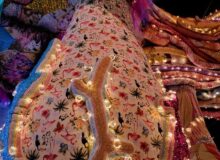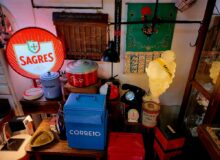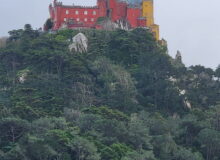I read that ludicrous line, “without historical intent…” on a museum explanatory sheet today, about…
Pediments, Portals, Palaces, Pastry, Not Necessarily in That Order
An absolutely priceless weather day: hot, but not scorching, a light breeze and a few fair weather clouds which offered periodic relief. We had some strawberries, cherries, yogurt and Nespresso at the apartment, then wandered into the centre. We stumbled across St. Peter’s (Peterskirche) by accident. It has an austere exterior, but inside it’s over the top baroque. We were two of about three people inside, except for an organist and trumpeter who were practicing Bach. It was serene and eloquent without pretense.
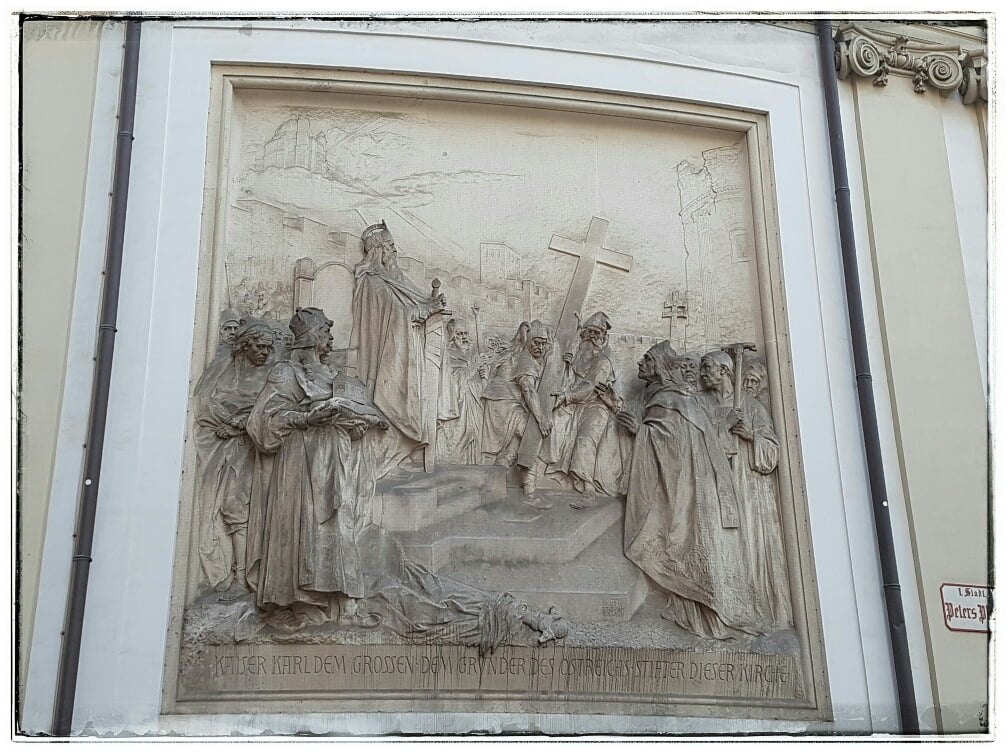
The bland and unassuming exterior…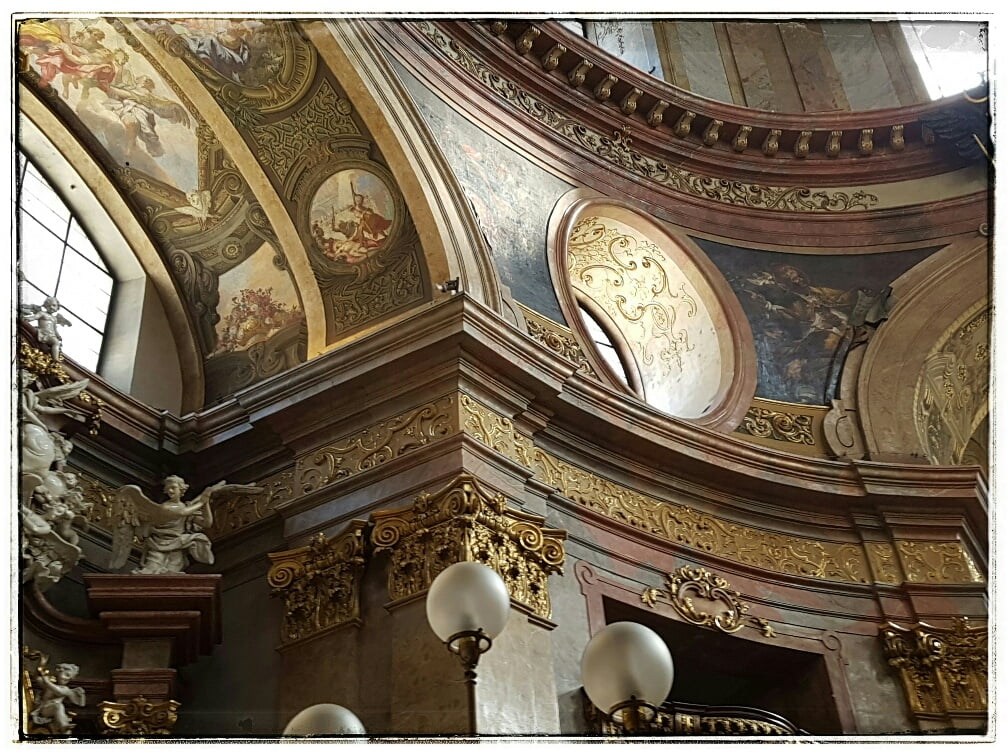
…the ornate baroque interior.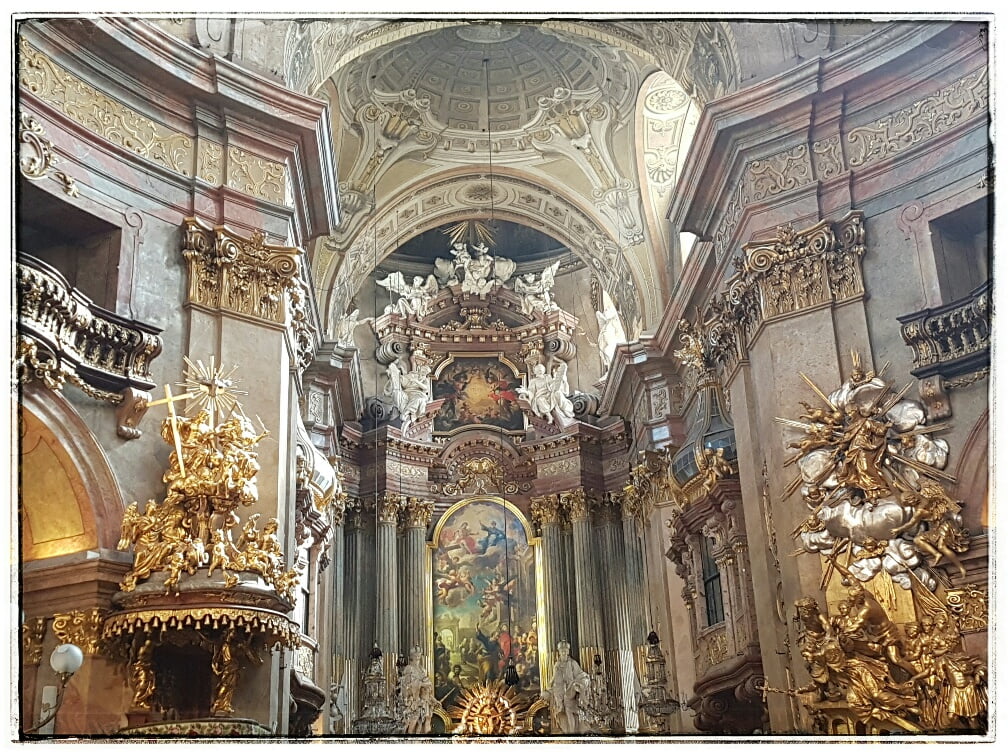
The Bach on trumpet and organ was something ethereal.
We moved on to St. Stephen’s (Stephansdom), a Viennese landmark for more than 700 years.
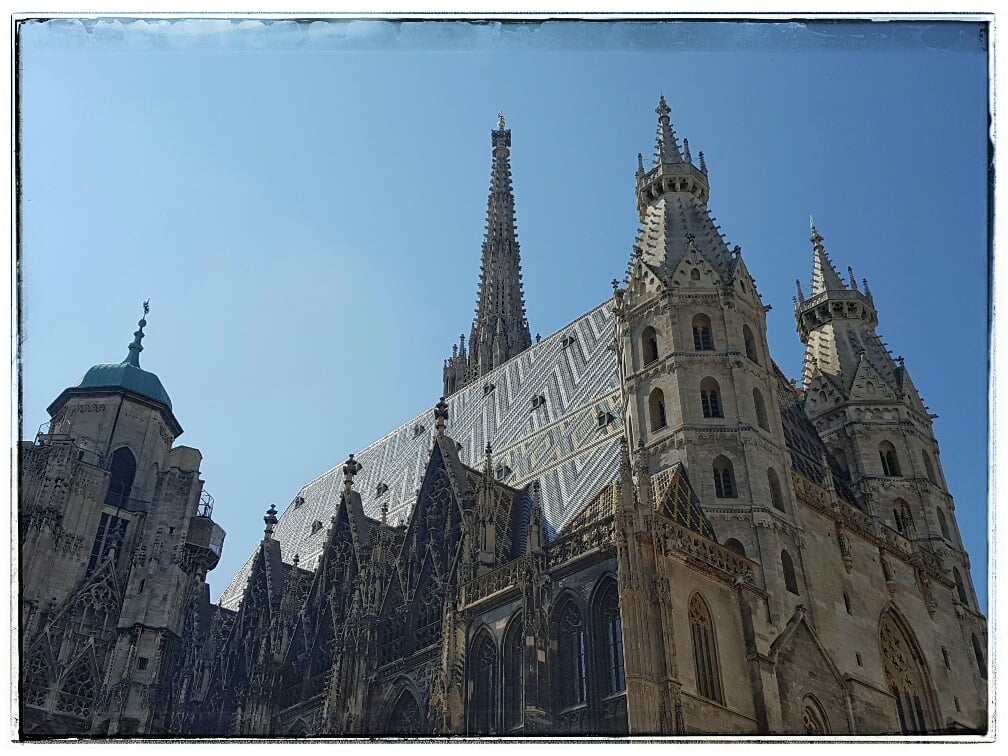
The front façade and towers (Romanesque) survived a fire, the rest was rebuilt, high gothic; after being bombed out in WWII it was painstakingly rebuilt again.
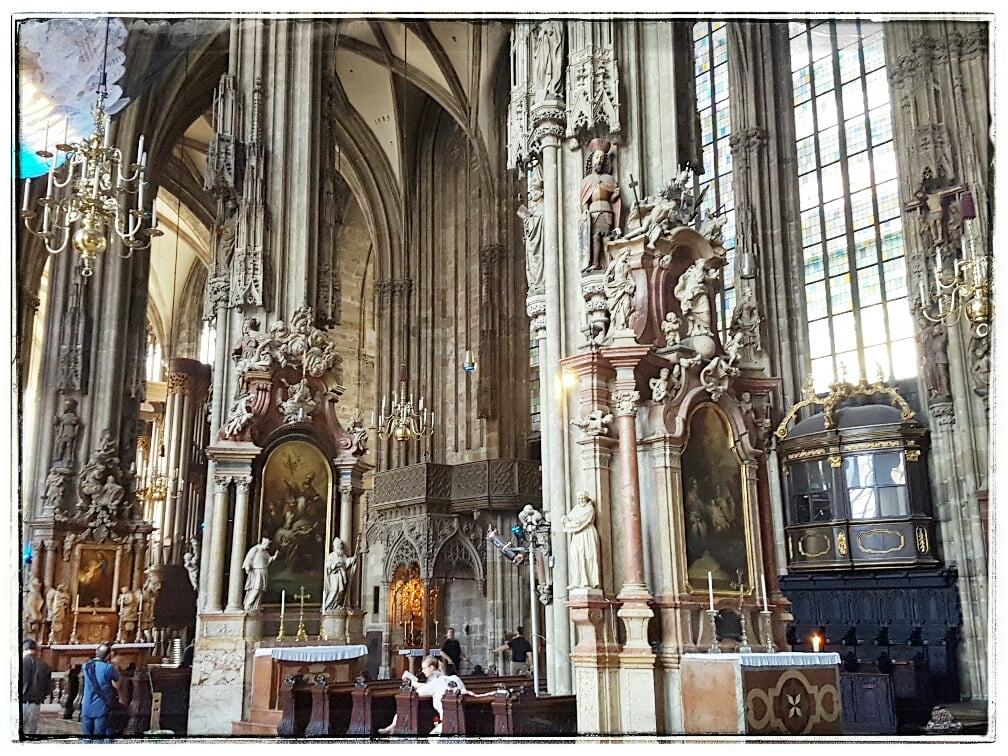
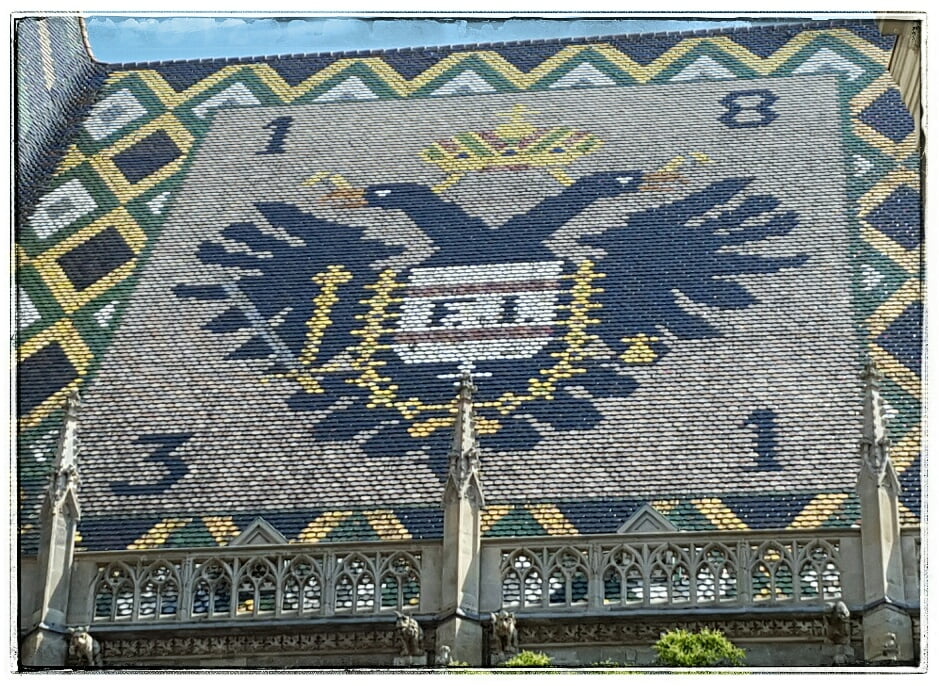
Part of the roof is the Austrian crest.
There was an English tour at 10:30 so we left and walked about the centre.
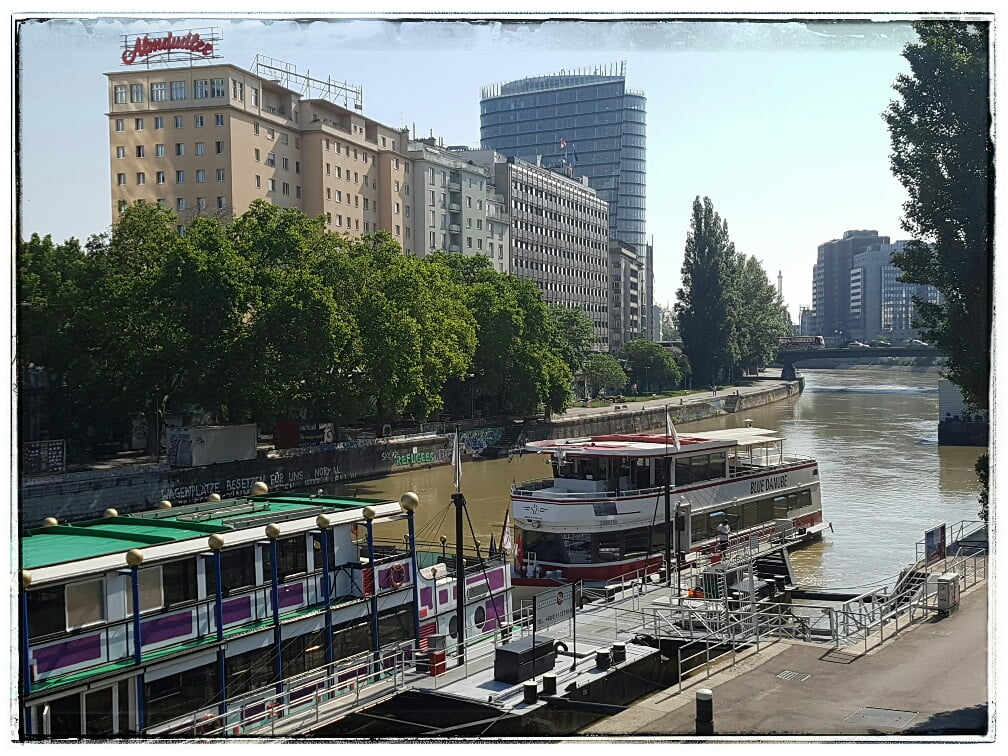
Pilgrimage to the Danube. Wow; nothing to report here.
When we returned to the cathedral at 10:30 a sign was posted that the English tour had been cancelled. We walked up the south tower instead.
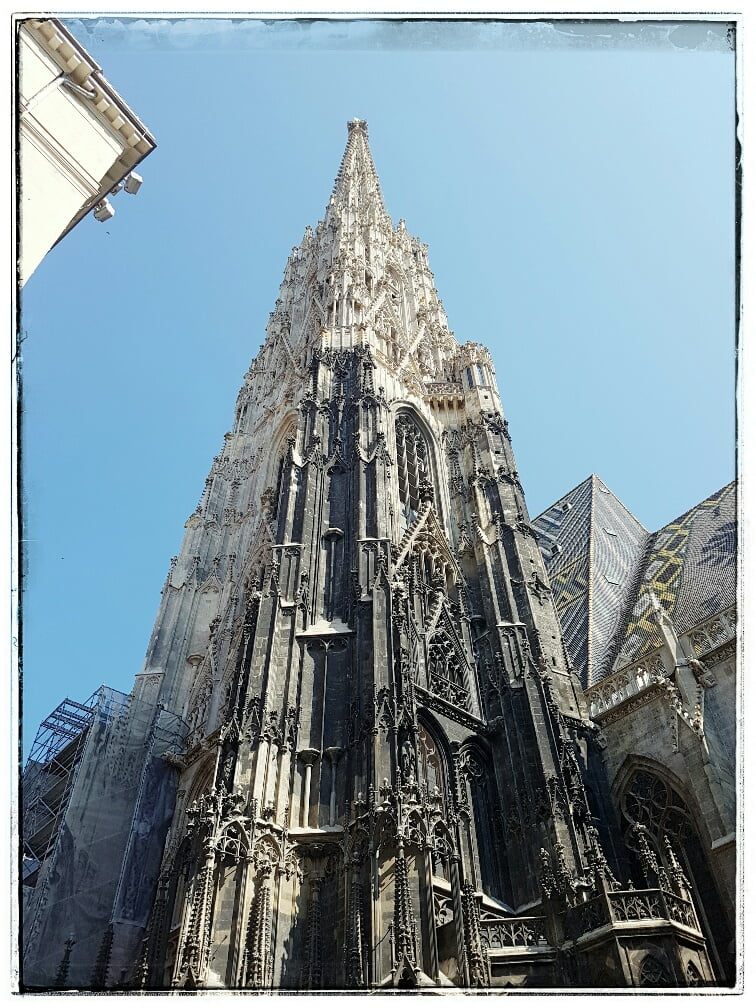
The stairs up the south tower are “only” 67 meters, or, in layperson’s terms, 343 stairs, spiral, narrow, stuffy. The up and down were teeming with grade school kids (and their sweat and farts and for some weird reason an endless humming of the first six bars of the Pink Panther theme).
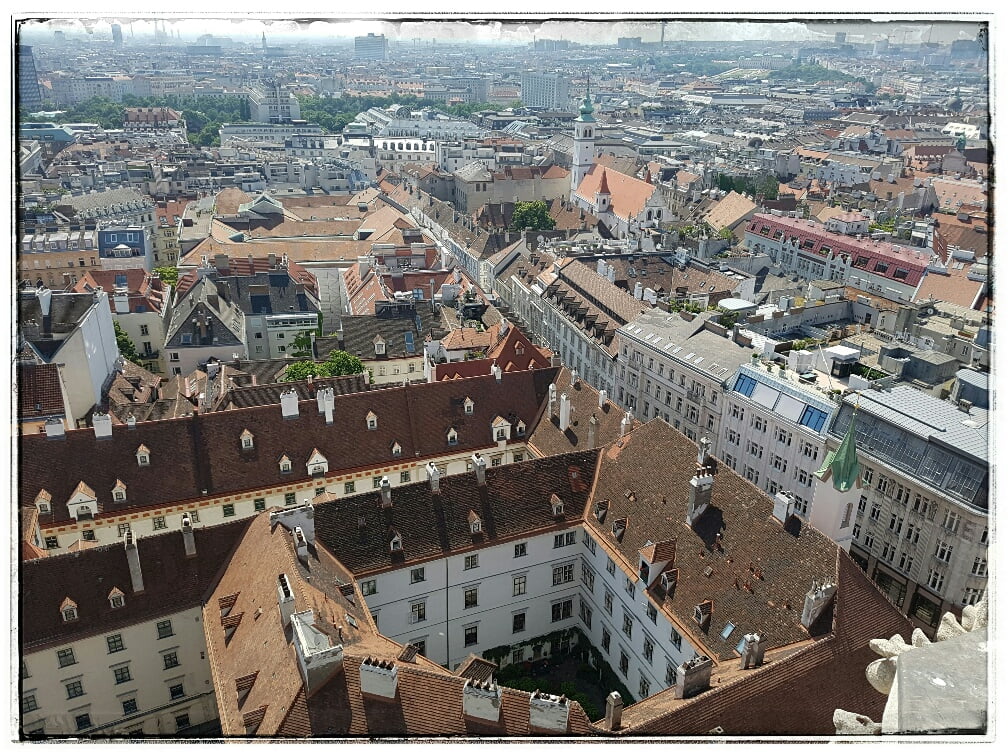

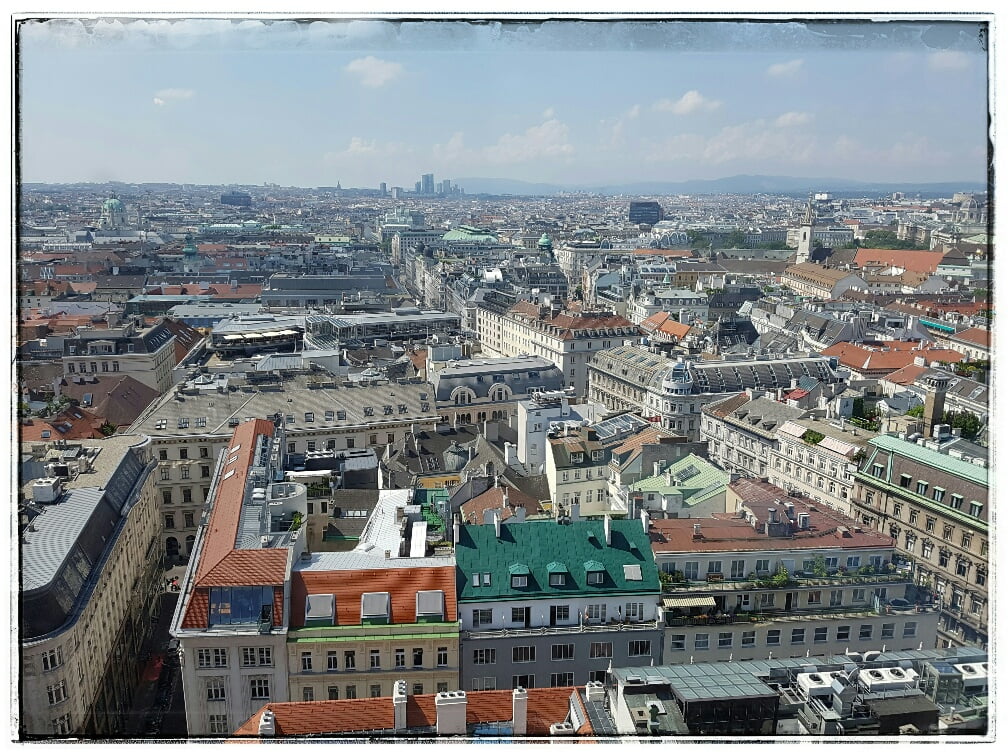
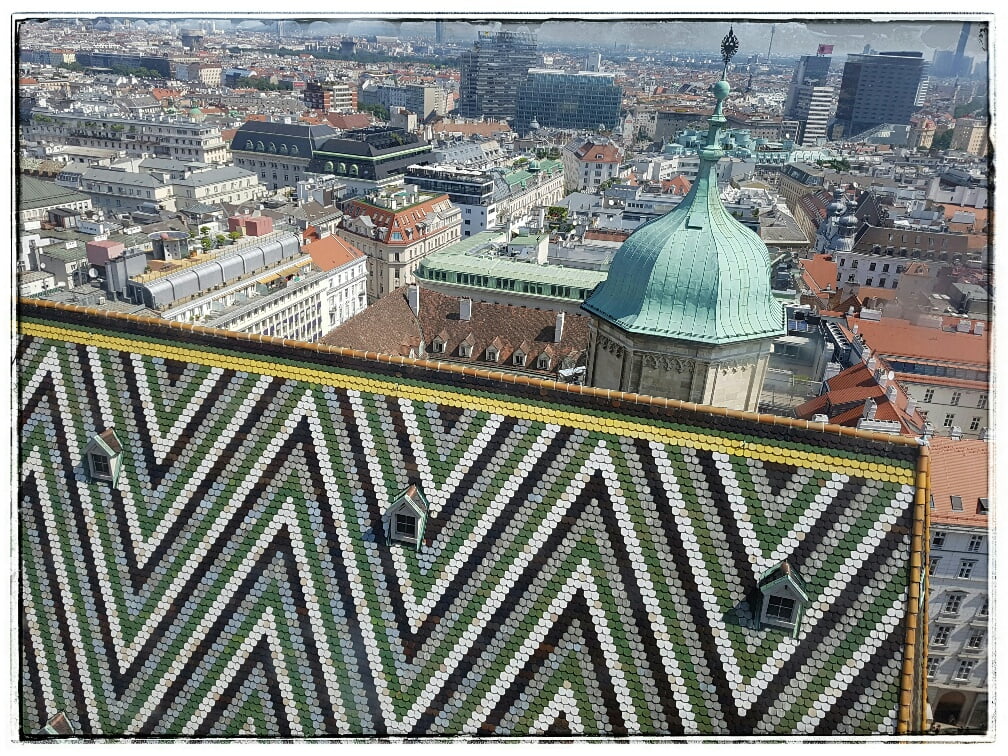
The views from the platform were exceptional though. You are not, I might add, at the very top. That would be a few hundred more steps.
From St. Stephen’s we made our way to Karls Kirche (aka St. Charles’). Built over 20 years from 1716, it was Charles VI commitment to commemorate the end of the plague; it began life as a baroque church, then ended up with a lot of rococo, neoclassical and Greek references. The portico from a Greek temple in front, obelisks which look positively pagan but in fact reference Trajan’s column, the pillars of Hercules and the entrance to the temple in Jerusalem, look like pastiche.
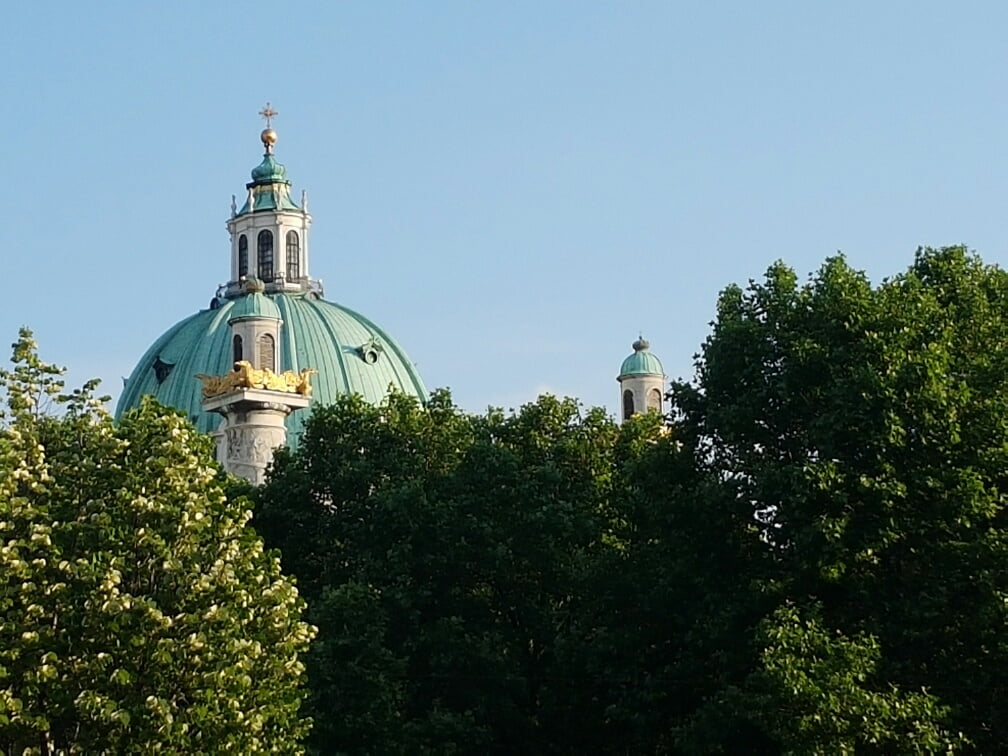
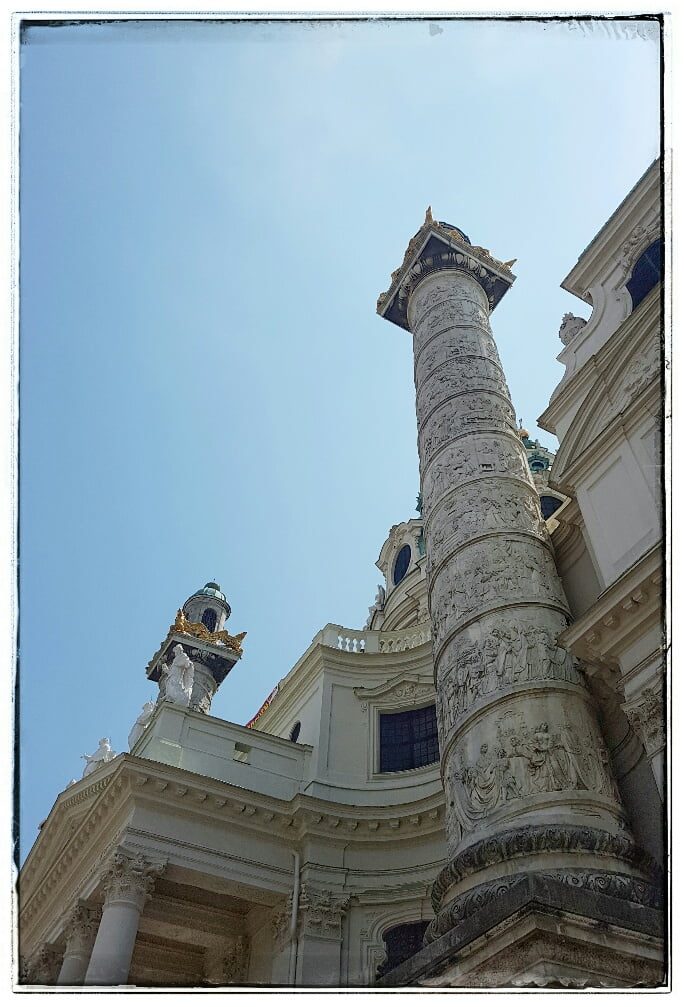
Inside there are a melange of styles. The original architect intended the only colours to be gold and white, a reference to the Pantheon.
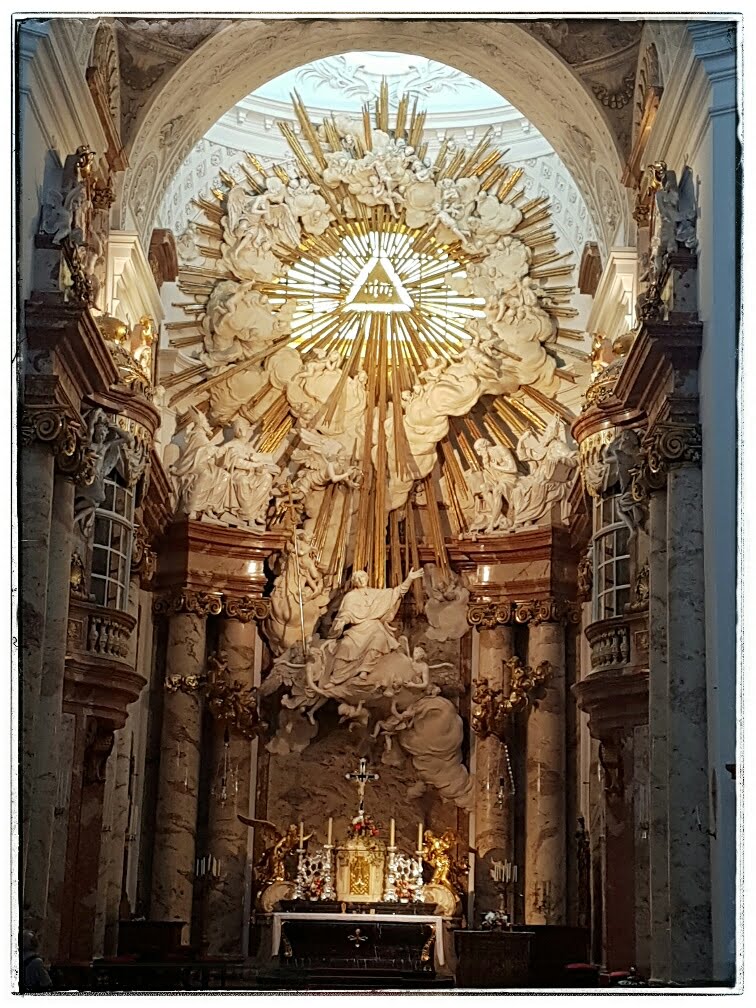
Despite the paintings, it is actually restrained, without stained glass or an abundance of frescoes. But here’s where things got tricky: There was a lift to the dome. It seemed innocent enough. In fact, it was an elevator installed in and supported by scaffolding which spanned the church. When you took the lift up, you were on a plywood platform. I immediately wanted to descend. But SS refused to take my camera, up the scaffolding stairs, four more levels to the dome. Imagine! So I persevered. It wasn’t pretty.
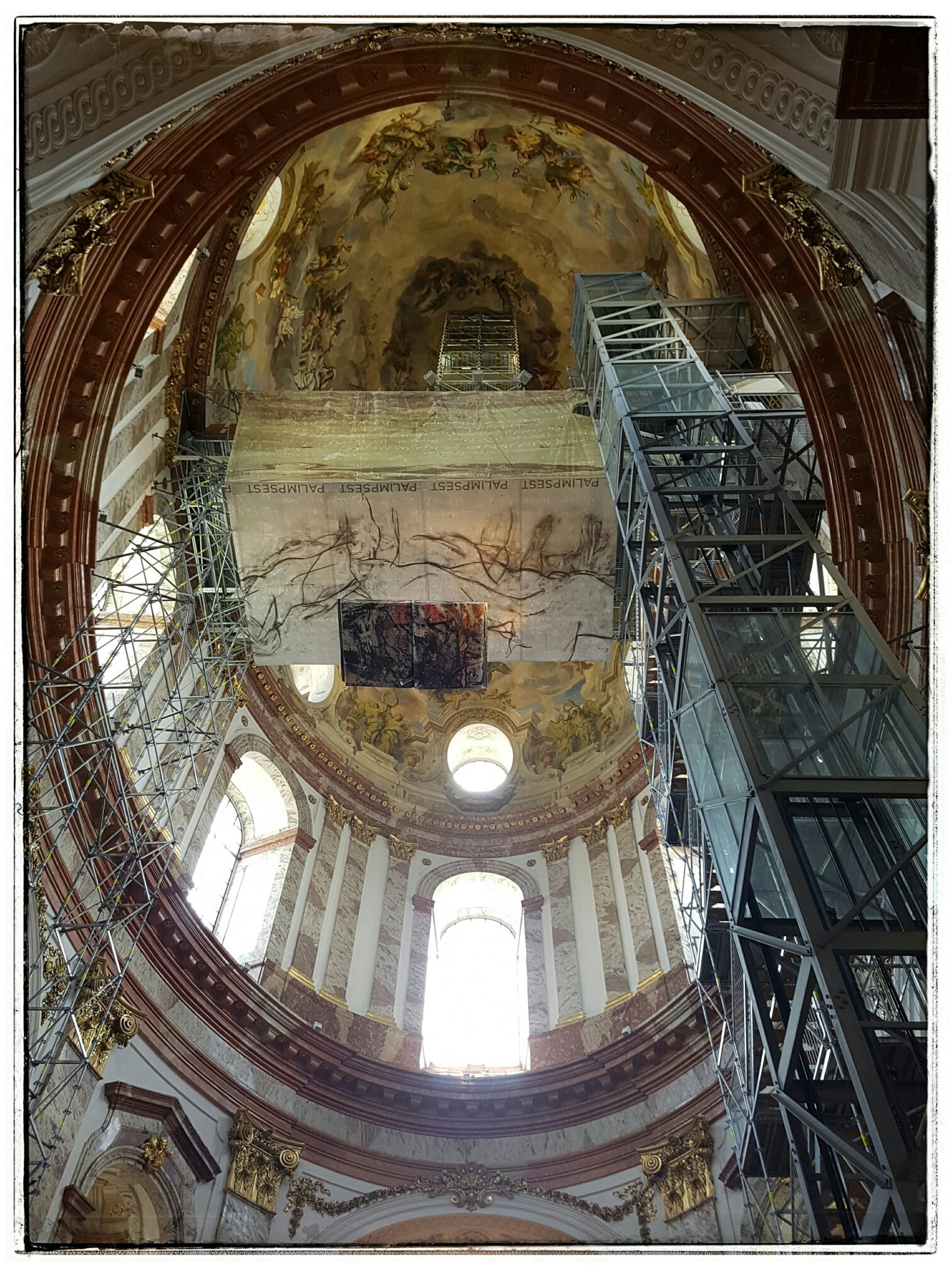
To say I found this daunting–first the lift to the suspended platform, then the umpteen stairs to the dome–is an understatement; each step creaked, and if the elevator went up or down the whole scaffolding wiggled. Tourists on the platform below caused a sway. And the higher you went the more flimsy the structure felt.
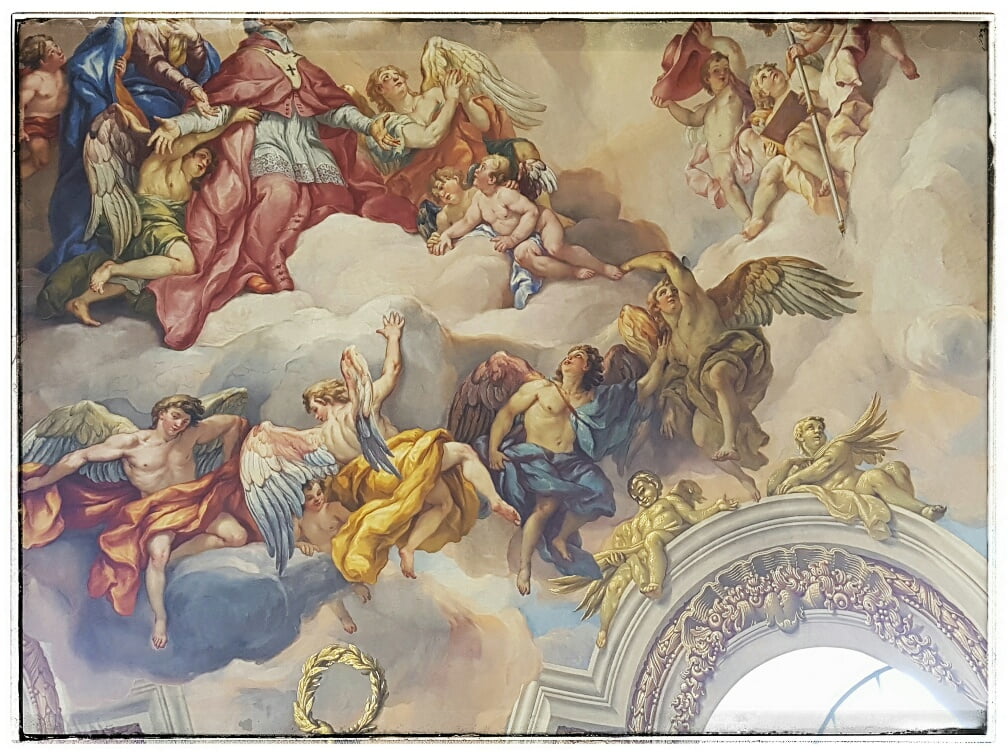
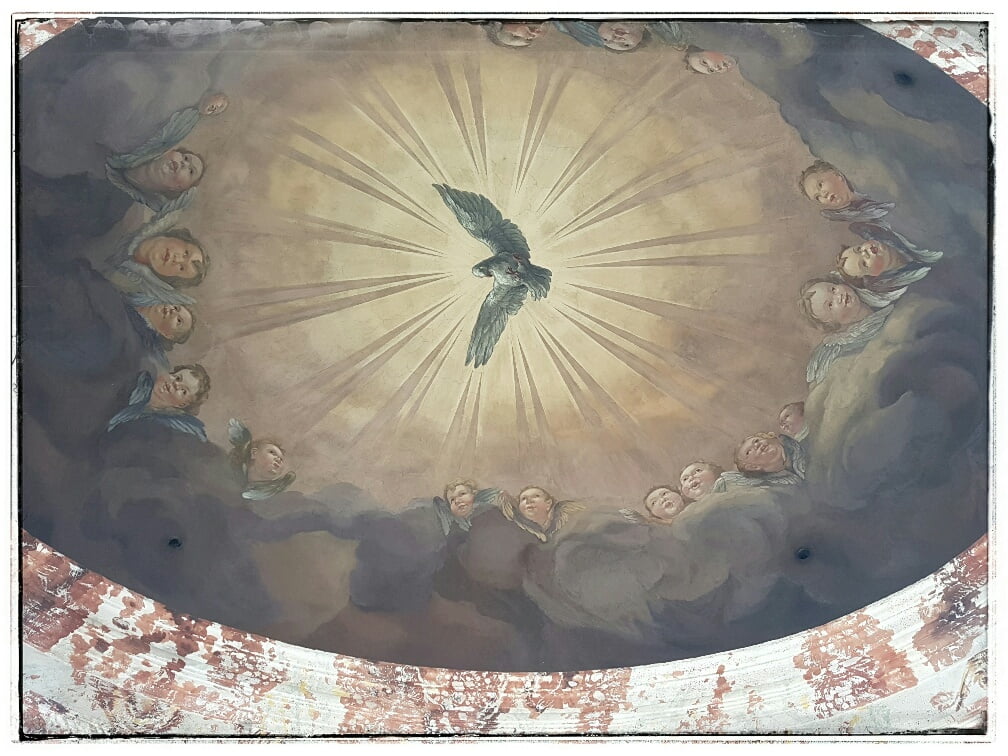
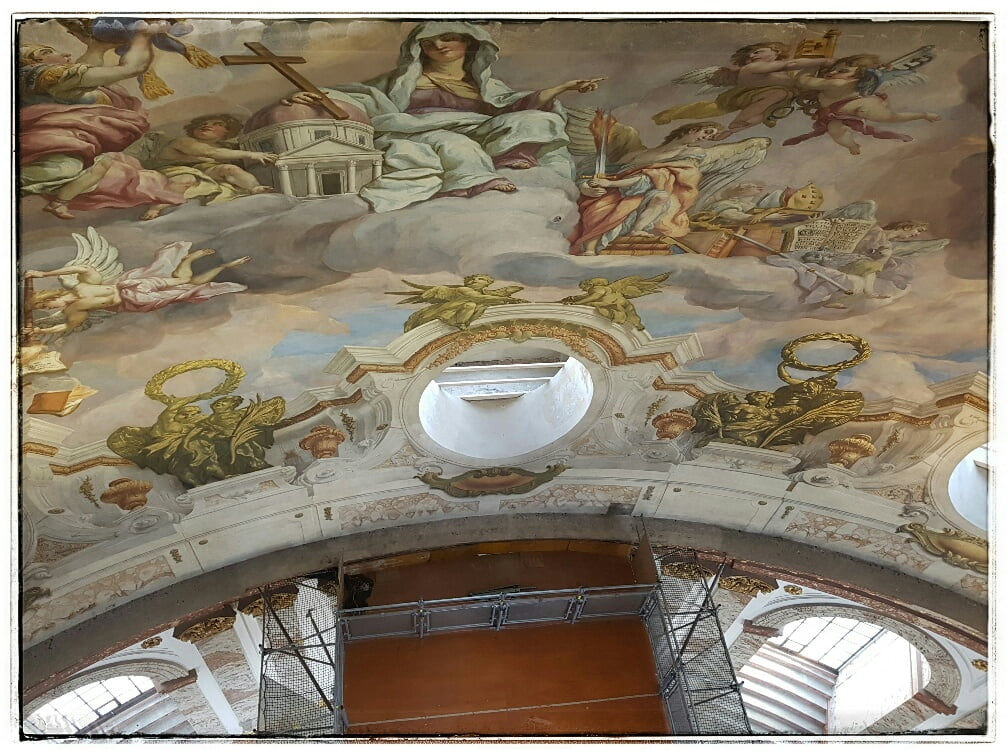
This picture is the top, the dome, looking down several stories to the elevated platform.
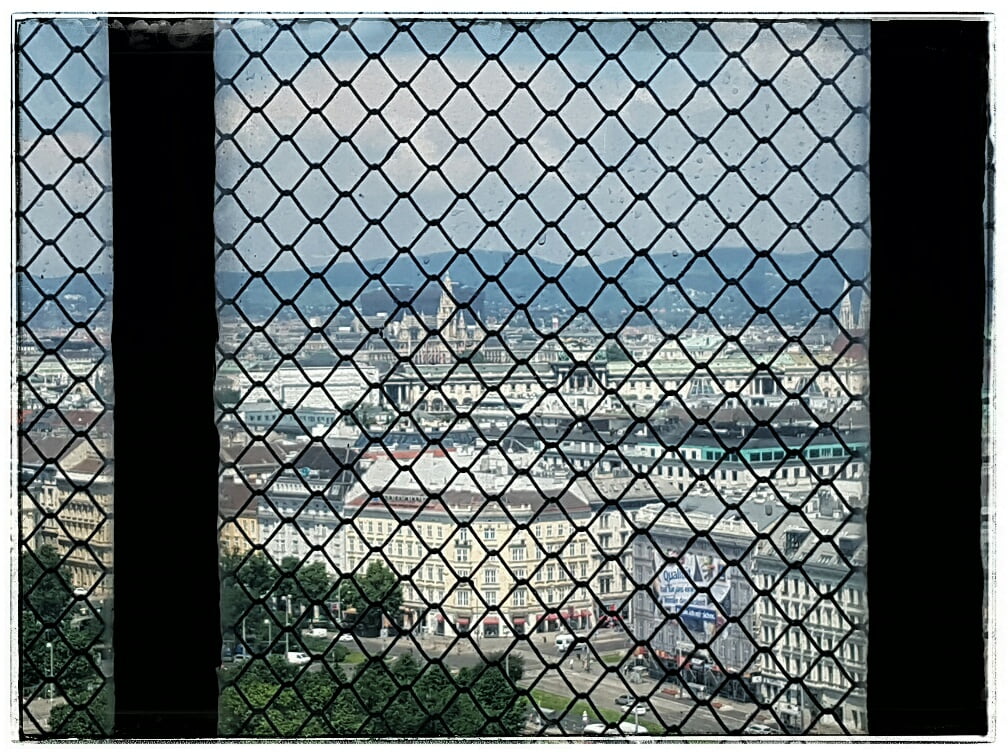
The views through the tiny windows in the upper dome were breathtaking, but the pigeon wire didn’t make for good pics.
After our holy morning we went to the Naschmarkt (yes, that is the correct spelling) an open air market of about three kms of stalls and restaurants, having its roots from the 1600s it now looks like any farmer’s market, lush displays of decadent food and the occasional lush passed out. We had a decent lunch at Neni.
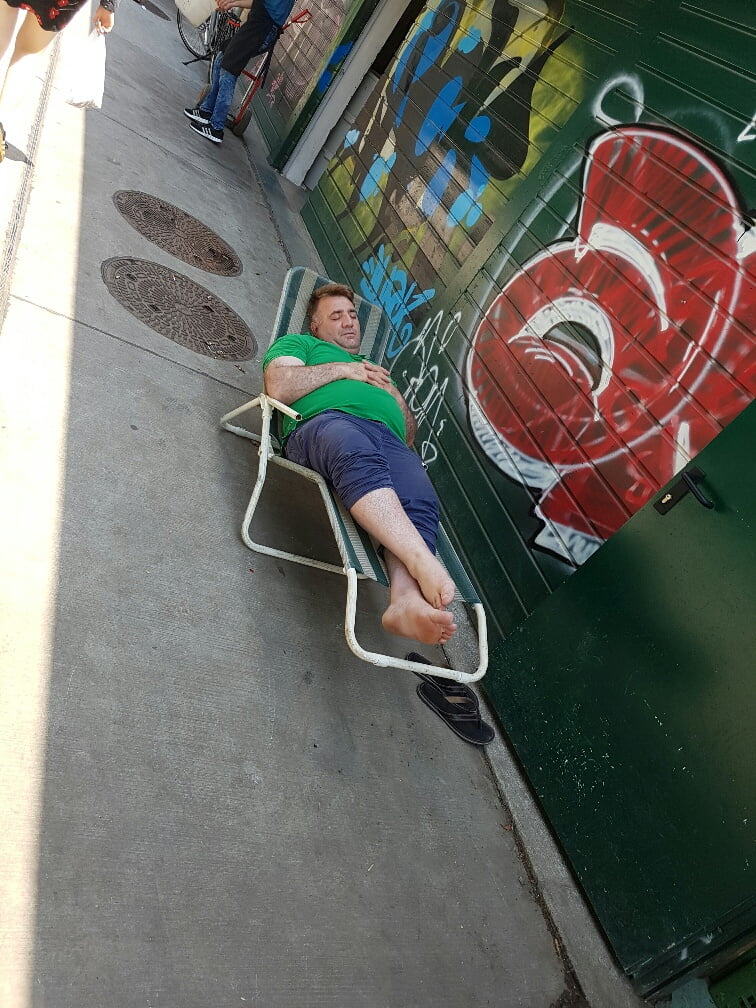
Following lunch we walked to the Belvedere gardens. These surround the lower and upper summer palaces for the emperor.
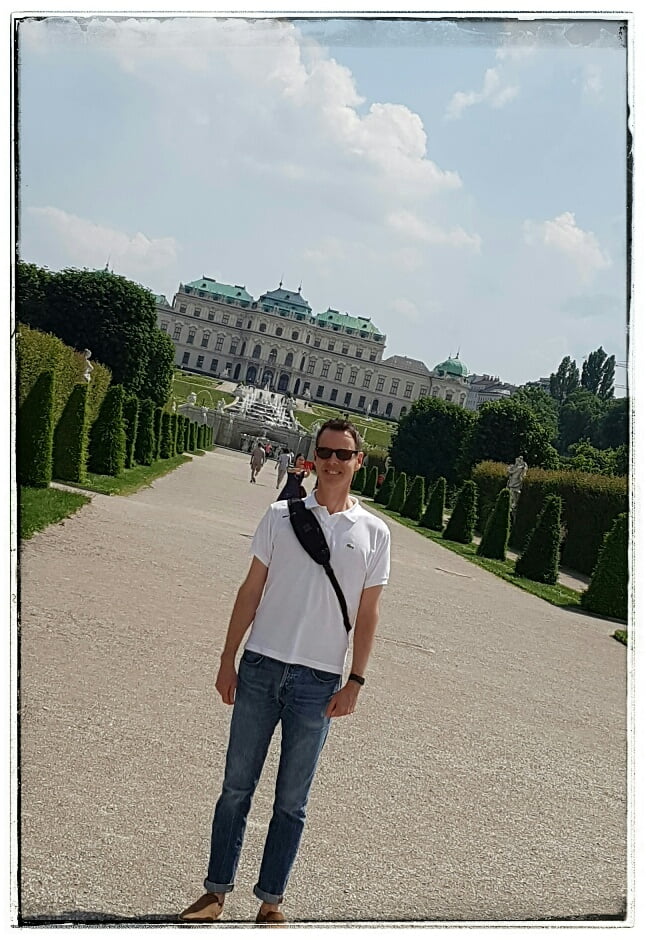
Looking across the gardens to the upper palace.
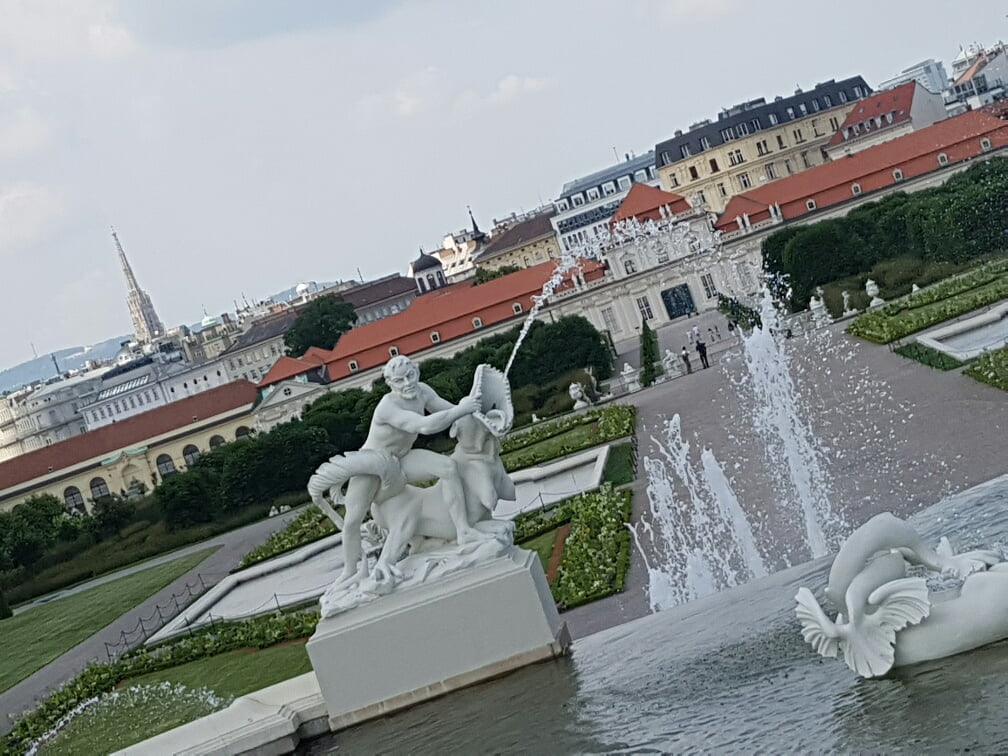
Looking north back to the lower palace.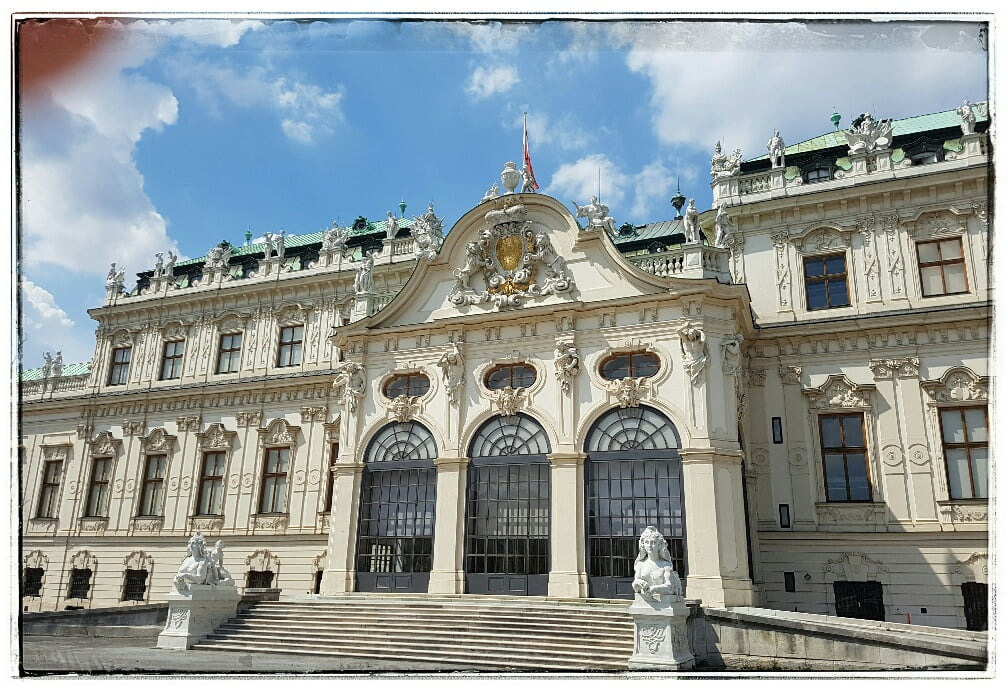
The official entrance to the upper palace.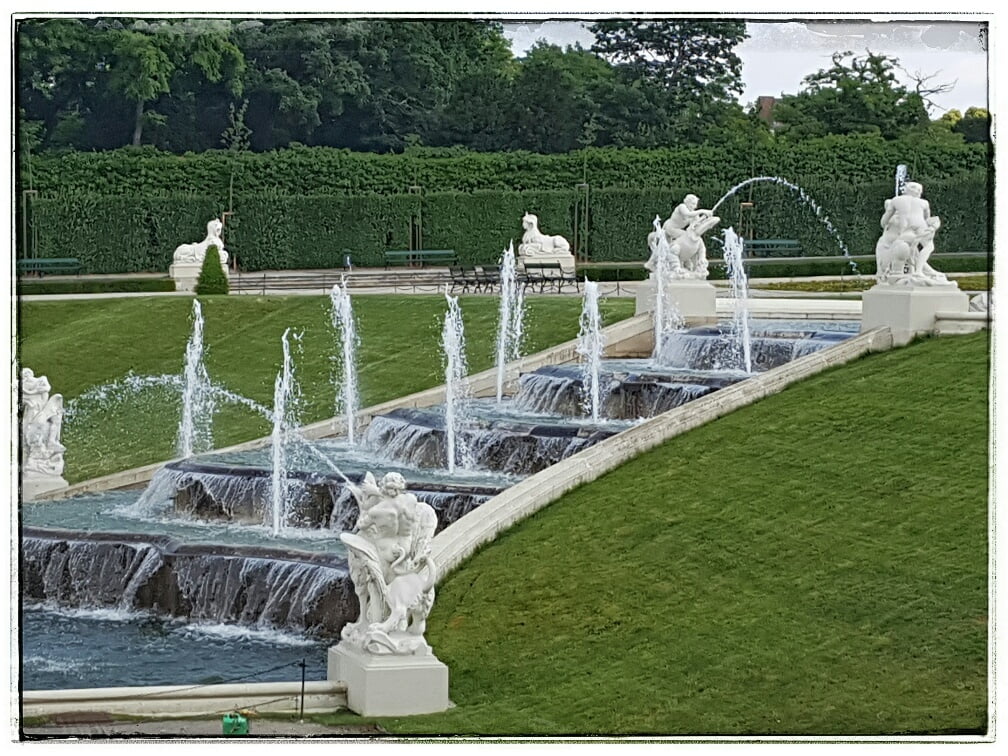
These are the very fountains that inspired the designers at Plymouth.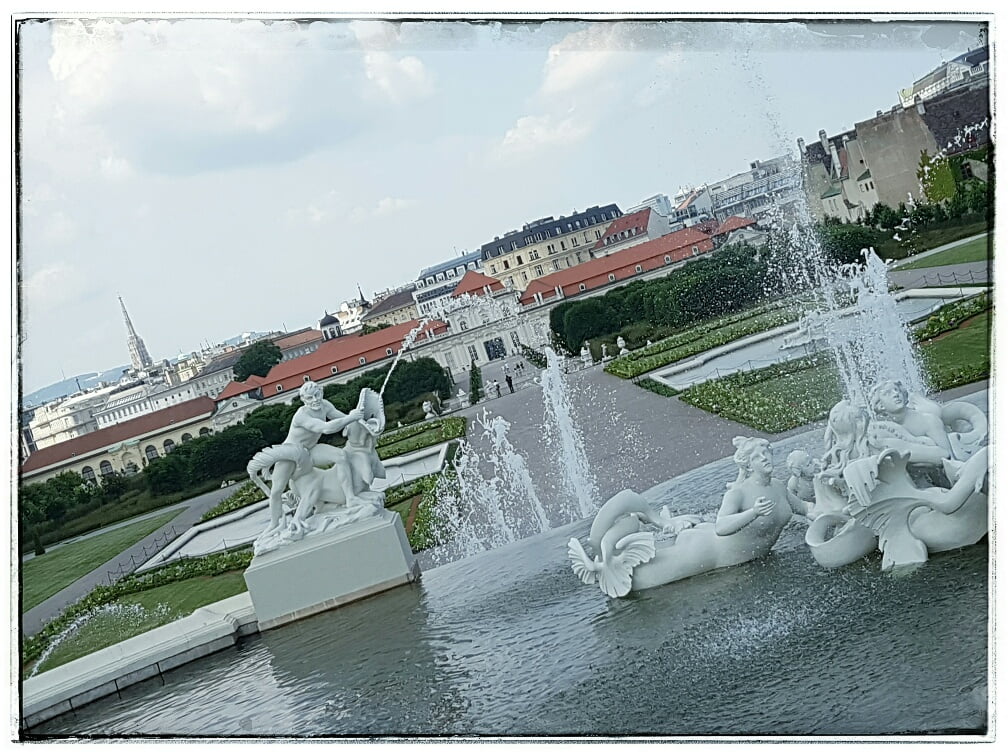
It had hotted up substantially. The spray from the fountains and shade of the west gardens provided some much needed respite.
We zig-zagged back to the centre, stopping briefly for a sacher torte and coffee (it is, after all, the city of the 10,000 calorie day).
For dinner we returned to the Naschmarkt, then to the Musikverein; if you’ve ever seen the Vienna Boys Choir Christmas broadcast, you’ve seen the Musikverein. The acoustics are beyond being a marvel; it has been a bit of a bucket list item for me. We were able to score tickets to Rudolf Buchbinder playing Beethoven Sonatas. It was an especial evening, I’ve never heard a Steinway sound like an orchestra. Although Czech born, Buchbinder is something of an Austrian hero. Sadly, he took five (count them, five) ovations, but no encore.
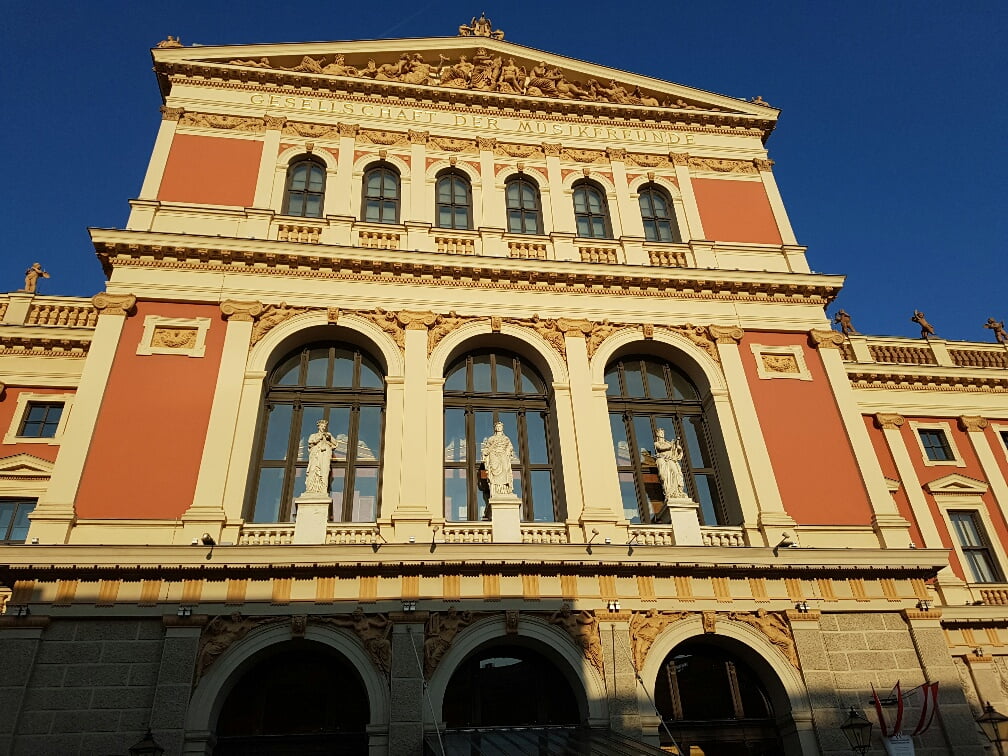
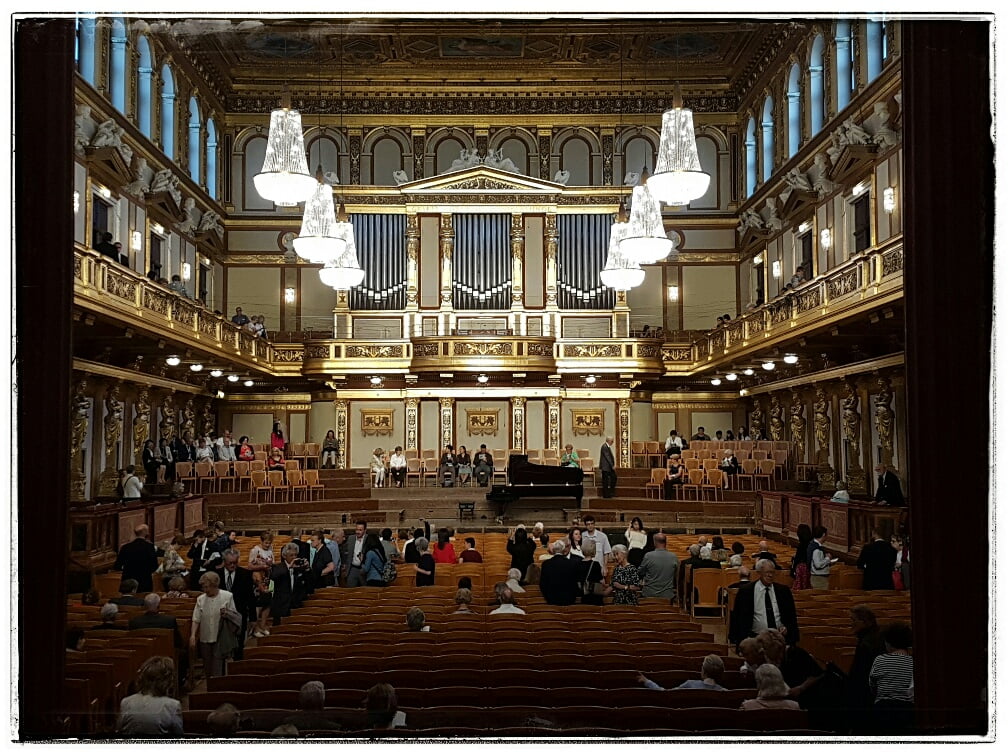
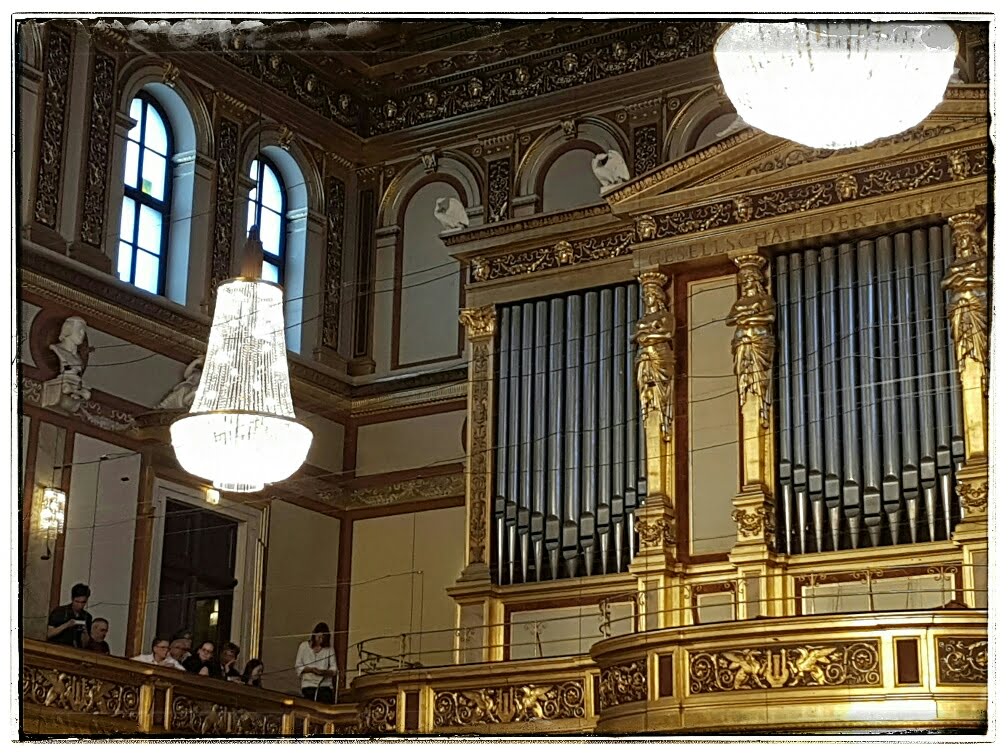
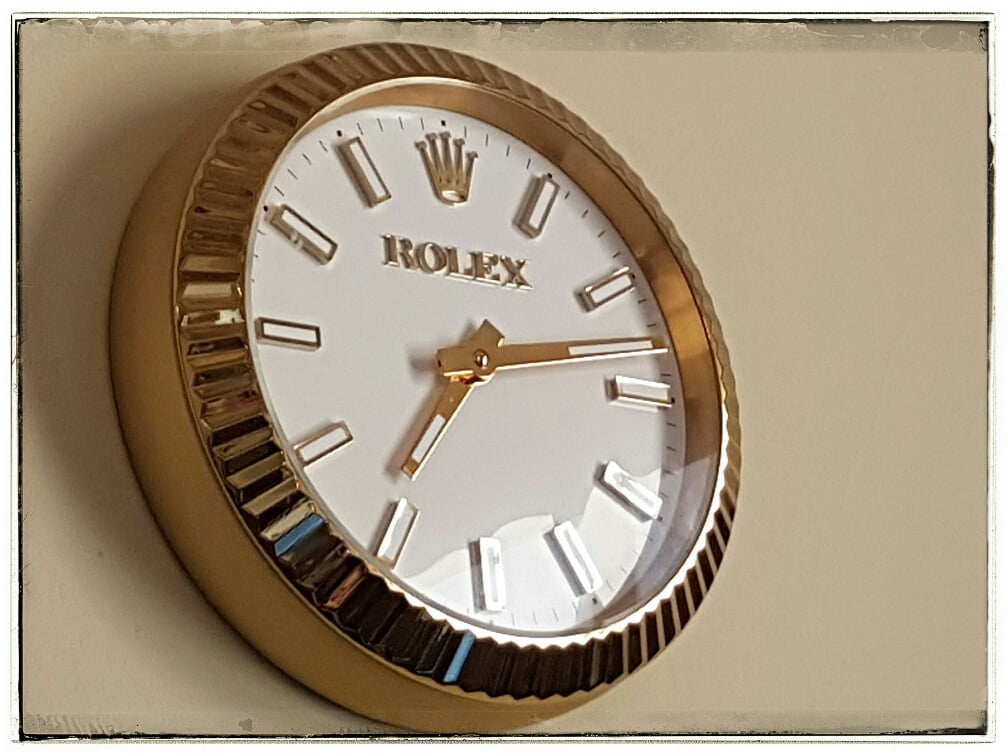
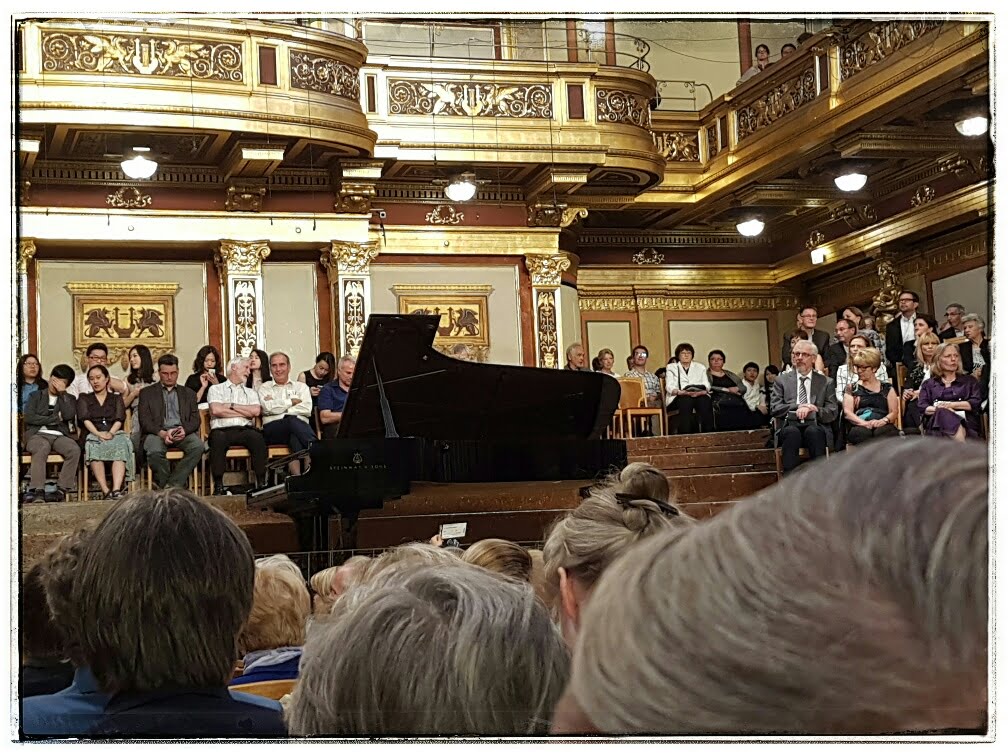
We were in the tenth row, on the floor, or parterre; you cold see all the trills and heartfelt expression.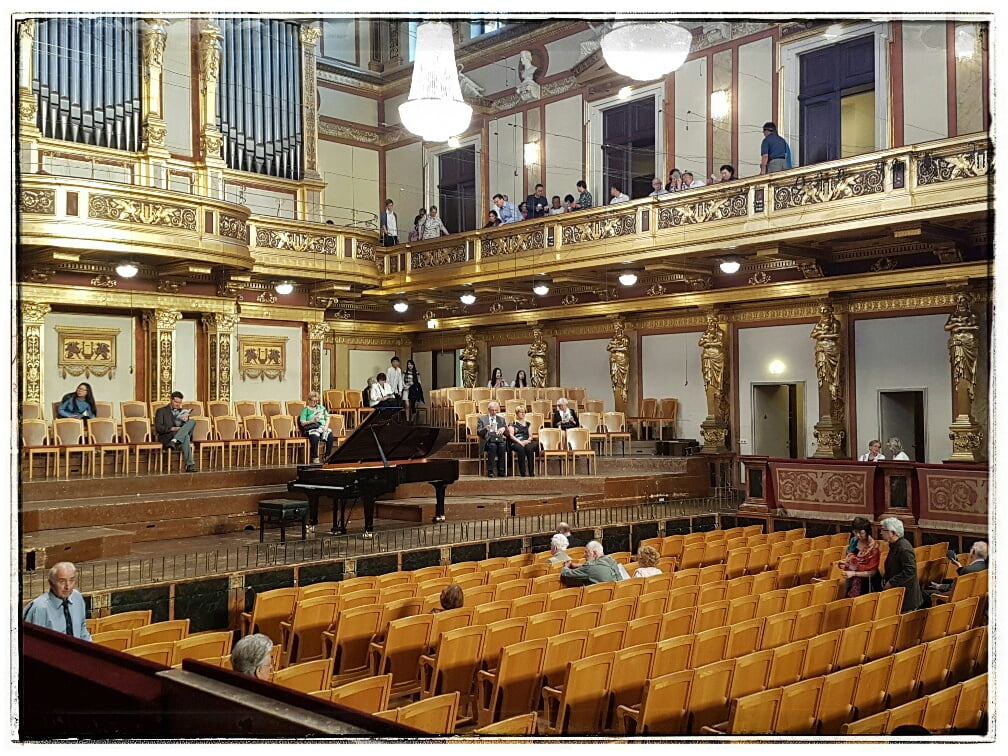
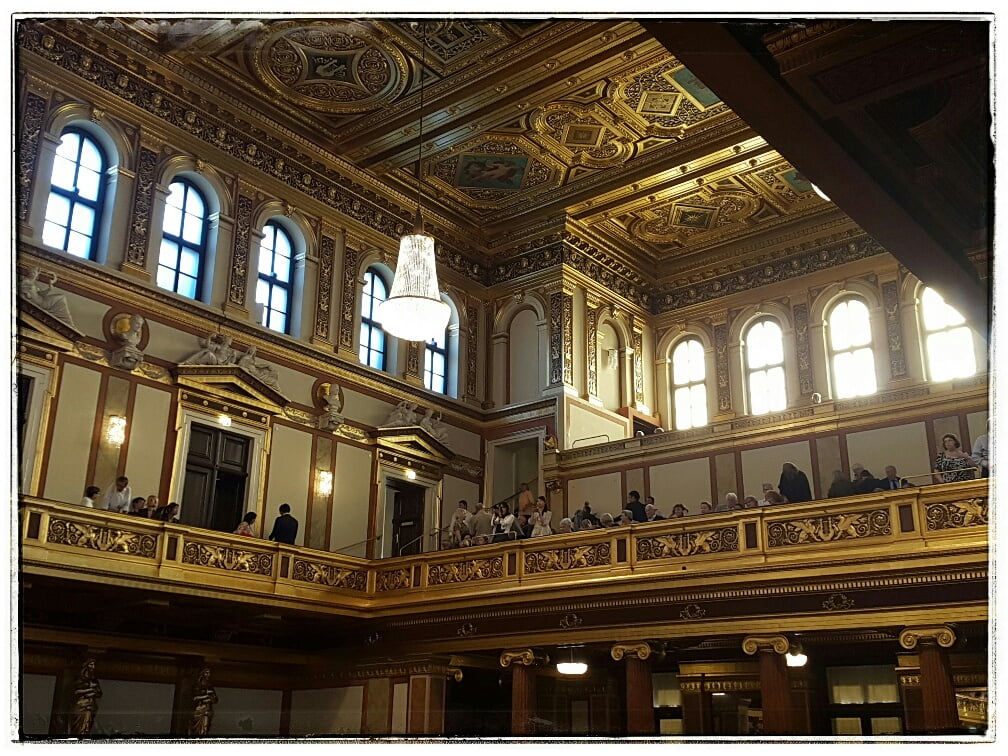
Well… that’s it for Vienna. Off to the Czech Republic tomorrow.

